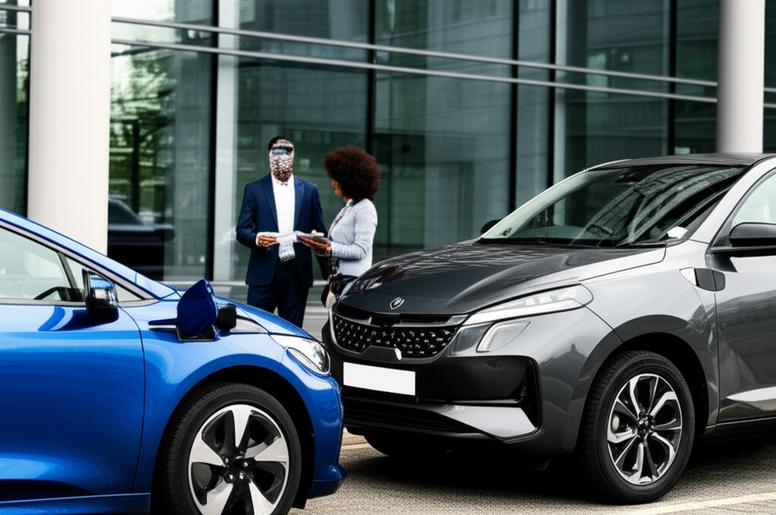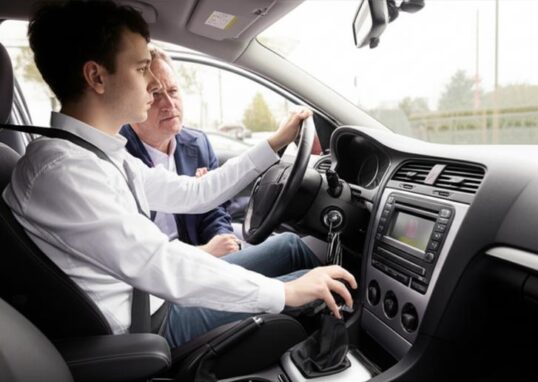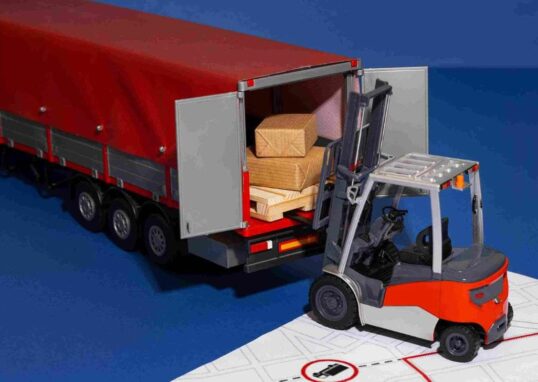
The United Kingdom’s automotive landscape is constantly evolving, and with it, the intricacies of vehicle taxation. At the forefront of these shifts are the significant pronouncements made by Shadow Chancellor Rachel Reeves, particularly concerning Benefit-in-Kind (BIK) tax. If you’re a business owner, a fleet manager, or simply someone considering a company car, understanding these changes is more crucial than ever. BIK tax, in essence, is a levy on non-cash perks provided by an employer, with company cars being a prime example. These tax adjustments, especially for electric vehicles (EVs) and even traditional workhorses like double cab pick-ups, are set to redefine company car policies and could significantly influence the rate of EV adoption across the UK.
This isn’t just about minor tweaks; it’s a strategic realignment by the government to modernise the tax system while navigating environmental objectives. The impact could be felt across various sectors, from construction businesses relying on versatile pick-ups to tech startups offering cutting-edge electric cars to their employees. So, let’s dive deep into Rachel Reeves BIK Tax Changes and uncover what they truly mean for the future of company vehicles and the journey towards a greener transport system in the UK.
Understanding Benefit-in-Kind (BIK) Tax: A Crucial Refresher for UK Businesses
What is BIK Tax and How Does it Apply to Company Cars?
Benefit-in-Kind (BIK) tax, often referred to as company car tax, is essentially a tax on non-cash benefits that an employee receives from their employer, in addition to their regular salary. When an employer provides a company car that is available for private use, even if that use is minimal, it’s considered a taxable benefit. This means the employee has to pay income tax on its value, and the employer also faces National Insurance contributions on that benefit. It’s a fundamental aspect of UK taxation that influences how businesses structure their vehicle fleets and how employees perceive the value of a company car.
Traditionally, BIK rates for company cars are calculated using a specific formula. This formula takes into account several key factors: the vehicle’s P11D value (which is its list price including VAT and any optional extras, but excluding the first-year registration fee and road tax), its CO2 emissions (a major determinant), the type of fuel it uses, and the employee’s income tax band. Higher CO2 emissions generally lead to higher BIK rates, making cleaner vehicles more attractive from a tax perspective. For years, this system has been a powerful lever in government policy, subtly nudging companies and individuals towards more environmentally friendly transport choices.
The Historic Role of BIK in Encouraging Green Transport
For a considerable period, low BIK rates for electric vehicles played a pivotal role in accelerating their adoption in the UK. Recognizing the imperative to reduce carbon emissions and promote sustainable transport, the government introduced incredibly favourable BIK rates for EVs. For instance, rates were as low as 0% initially, gradually increasing to 2% for several years. This significant tax advantage made electric company cars an incredibly attractive proposition for both employers and employees.
These low rates effectively made EVs far more affordable to run as company cars compared to their petrol or diesel counterparts. This incentive was a clear signal from the government, demonstrating a commitment to the green agenda and encouraging businesses to transition their fleets. It helped to overcome some of the initial barriers to EV adoption, such as higher upfront costs, by offering substantial long-term tax savings. This policy was instrumental in kickstarting the electric vehicle revolution within the UK’s business sector, pushing companies towards more sustainable mobility solutions.
The Headline Shift: Reclassification of Double Cab Pick-ups
From Commercial Vehicle to Company Car: A Fundamental Change
One of the most significant and perhaps surprising changes under Rachel Reeves BIK Tax Changes concerns double cab pick-up trucks. For a long time, HMRC classified these versatile vehicles as ‘vans’ for tax purposes, provided they had a payload of at least one tonne. This classification allowed businesses and tradespeople to benefit from lower BIK rates and different capital allowance rules, reflecting their commercial utility. Vehicles like the Ford Ranger, Isuzu D-Max, and Toyota Hilux became popular choices for their dual capability – able to carry goods and equipment while also transporting a crew.
However, HM Revenue and Customs (HMRC) has now revised its interpretation, aligning with a 2020 Court of Appeal decision. Effective from April 6, 2025, most double cab pick-ups will no longer be treated as vans but will instead be classified as company cars for BIK and capital allowance purposes. This revised stance means that unless a pick-up is primarily unsuitable for private use, it will fall under car taxation rules. This reclassification marks a fundamental shift, impacting countless businesses across various sectors, particularly farming, construction, and other trades that heavily rely on these vehicles for their daily operations, as noted by Bumper.
Significant Tax Increases for Businesses and Drivers of Double Cab Pick-ups
The reclassification of double cab pick-ups brings with it substantial tax increases for both businesses and individual drivers. Previously, these vehicles were often subject to a flat van BIK rate, which was considerably lower. Now, they will be taxed based on their P11D value and, crucially, their CO2 emissions, similar to how traditional company cars are treated. Given that many high-emission diesel models of double cab pick-ups often fall into the highest CO2 emission bands, the tax burden is set to soar.
To put this into perspective, a basic rate taxpayer (20%) with a double cab pick-up valued at £45,000 and high CO2 emissions could see their annual income tax liability rise significantly. According to Lovewell Blake, their annual income tax could jump from around £804 to as much as £4,440. For a higher rate taxpayer (40%), this increase is even more stark, potentially seeing their annual tax bill rocket from approximately £1,608 to £8,880 or more. This means an annual tax burden increase of over £8,000 for some higher rate taxpayers, as highlighted by Kneadtocook. Beyond the employees, businesses will also face increased National Insurance contributions (NICs) on these higher BIK values, impacting their overall payroll costs. This substantial financial impact might force many businesses to rethink their vehicle fleets and procurement strategies.
Transitional Arrangements: Managing the Change for Existing Fleets
Recognizing the immediate financial impact of such a significant change, HMRC has put in place transitional arrangements to help businesses manage the shift for their existing fleets. For double cab pick-ups that were purchased, leased, or ordered before April 6, 2025, businesses can continue to apply the old, more favourable van tax treatment. This reprieve is not indefinite, however. These existing vehicles will retain their previous tax classification until the earlier of their disposal, the expiry of their lease, or April 5, 2029.
This transitional period offers a crucial window for businesses to review their current vehicle usage and plan for the future. It allows them to phase out older, high-emission pick-ups or explore alternative vehicle options without an immediate and drastic tax hit. Companies should use this time to conduct a comprehensive fleet audit, assess the financial implications of continuing with these vehicles beyond the transitional period, and consider strategies for shifting towards more tax-efficient alternatives, whether that’s traditional vans with lower BIK rates or the increasingly attractive electric vehicle options.
Rachel Reeves’ Policy: The Evolving Landscape for Electric Vehicle (EV) Taxation
The Gradual Rise of EV BIK Rates: A Shift in Incentives
While the focus on Rachel Reeves BIK Tax Changes often highlights double cab pick-ups, the landscape for electric vehicles is also undergoing a noticeable shift. For years, EVs enjoyed exceptionally low BIK rates, a powerful incentive designed to encourage adoption and drive the UK towards its net-zero goals. However, as EV sales continue to climb and the market matures, the government is gradually adjusting these rates. From April 2025, the BIK rate for electric vehicles will see its first increase, moving from the long-standing 2% to 3%. This is not a one-off adjustment; the rate is set to progressively rise by 1% annually until it reaches 5% by 2027/28, and then by 2% per year, culminating in a 9% rate by 2029/30, as confirmed by Electric Car Scheme and UKStartupMag. While this is an increase, it’s vital to place it in context.
Despite these incremental rises, electric vehicles will still offer significant tax advantages when compared to their petrol and diesel counterparts. For instance, petrol and diesel company cars typically face BIK rates ranging from 25% to 37%, influenced by their CO2 emissions. Even with the future increases, the maximum 9% BIK rate for EVs in 2029-30 remains substantially lower. This means that, for the foreseeable future, choosing an electric company car will generally still result in a lower tax burden for both the employee and the employer, continuing to position them as a financially sound and environmentally responsible choice for UK businesses and employees, as stated by A4G LLP.
Introduction of Vehicle Excise Duty (VED) for Electric Vehicles
Another notable change under Rachel Reeves’ policy is the introduction of Vehicle Excise Duty (VED), commonly known as road tax, for electric vehicles. Previously, zero-emission vehicles were exempt from VED, further sweetening the deal for early adopters. However, from April 1, 2025, this exemption will end, marking a significant shift in how EVs are taxed. This move is part of the broader government strategy to “modernise the tax system” and ensure all vehicle users contribute to road infrastructure and public services as the number of EVs on the road grows, as indicated by the Electric Car Scheme.
Under the new rules, new electric vehicles registered from April 1, 2025, will incur a minimal £10 charge in their first year. From the second year onwards, and for all EVs registered before March 2025, they will be subject to the standard annual rate, currently set at £195. While this is a new cost for EV owners, it’s a relatively modest one compared to the overall running costs and the tax benefits still enjoyed by electric vehicles. This adjustment aims to create a more equitable system where all road users contribute, but without stifling the continued growth of the EV market.
The Luxury Car Surcharge: Impact on Premium EVs
For those eyeing higher-end electric models, Rachel Reeves’ policy also includes the application of the ‘luxury car surcharge’. This additional charge isn’t new to the UK tax system, but its extension to electric vehicles with a list price exceeding £40,000 adds another layer of consideration for businesses and individuals alike. From April 2025, these premium EVs will be subject to an additional annual charge, currently set at £390 or £425, for a period of five years from the second year of ownership. This surcharge is paid on top of the standard VED discussed earlier.
This particular levy means that while a standard EV might incur only the new £195 annual VED, a high-spec Tesla or a premium electric SUV, for example, will see its annual road tax bill significantly higher. For companies managing a fleet of luxury electric vehicles, this will undoubtedly increase the total cost of ownership. It encourages a careful evaluation of the entire cost package when selecting premium electric models, balancing the environmental benefits and lower BIK rates against the added VED and luxury surcharge. Businesses should factor this into their procurement decisions to ensure they remain tax-efficient and cost-effective.
Hybrid Vehicles: A Separate Trajectory for BIK
While the spotlight often shines on pure electric vehicles and the reclassification of pick-ups, hybrid vehicles are also on a distinct BIK trajectory under Rachel Reeves’ policy. Plug-in hybrids (PHEVs) and traditional hybrids, which combine an electric motor with a petrol or diesel engine, have enjoyed more favourable BIK rates than conventional internal combustion engine (ICE) cars due to their lower CO2 emissions. However, similar to pure EVs, these rates are also set to rise in the coming years.
Starting from April 2028, BIK rates for hybrid vehicles are scheduled to increase. Specifically, the rates for vehicles emitting between 1-50g/km of CO2, which typically includes many plug-in hybrids, will rise to 18% in 2028-29 and 19% in 2029-30, as outlined by UKStartupMag. While still lower than the highest rates for petrol and diesel vehicles, this marks a clear shift away from the ultra-low taxation previously offered. Businesses with hybrid fleets or those considering them will need to factor these rising rates into their long-term financial planning, potentially accelerating a transition to full electric to maximise tax efficiencies as incentives for hybrids diminish over time.
Strategic Adaptations: Navigating the New Tax Environment for UK Businesses and Employees
Optimising Company Car Schemes: The Continued Relevance of EV Salary Sacrifice
Despite the gradual rise in EV BIK rates, salary sacrifice schemes continue to stand out as a highly tax-efficient method for employees to acquire electric vehicles. A salary sacrifice scheme allows an employee to give up a portion of their gross salary in exchange for a non-cash benefit, such as a company EV. This reduces their taxable income, leading to savings on income tax and National Insurance contributions. Employers also benefit from reduced National Insurance contributions, making it a win-win scenario for both parties, as highlighted by Electric Car Scheme.
Even with BIK rates for EVs increasing to 9% by 2029-30, the overall savings through salary sacrifice often remain substantial compared to purchasing an EV outright or opting for a petrol/diesel company car. For example, the Electric Car Scheme noted that the scheme automatically updates fees to ensure it remains a cost-neutral benefit for companies. Businesses should calculate potential savings based on employee tax bands and the specific EV chosen. This method helps maintain EV adoption momentum by mitigating some of the rising costs, ensuring employees can still access cleaner, more affordable transport.
Rethinking Fleet Management and Procurement Decisions
The Rachel Reeves BIK Tax Changes necessitate a thorough re-evaluation of fleet management and procurement decisions for businesses across the UK. The days of simply choosing vehicles based on upfront cost or traditional preferences are rapidly fading. Now, a comprehensive fleet audit is paramount, looking beyond just the initial purchase price to consider the total cost of ownership, including BIK, VED, insurance, servicing, and capital allowances. This involves analysing the current fleet’s CO2 emissions, identifying high-tax liabilities, and planning for the transition away from vehicles like reclassified double cab pick-ups.
Strategies should focus on shifting towards lower-emission vehicles, with electric vehicles often being the frontrunner due to their still-favourable BIK rates. Businesses need to weigh the pros and cons of leasing versus outright purchase under the new rules. Leasing can offer greater flexibility and predictable monthly costs, along with potential VAT benefits, especially for mixed-use vehicles where 50% of VAT on lease payments can often be reclaimed, as advised by A4G LLP. Conversely, outright purchase might appeal to those looking to leverage 100% First Year Allowances for EVs. Making informed decisions now will be crucial for long-term financial health.
Capital Allowances and VAT Implications for Company Vehicles
Understanding capital allowances and VAT implications is vital for businesses navigating the new tax landscape. For electric vehicles, a significant incentive remains: 100% First Year Allowances (FYA). This allows businesses to deduct the full cost of a qualifying EV from their taxable profits in the first year of purchase. This generous relief is set to continue until at least March 2026, offering a substantial tax saving for companies investing in electric fleets. This makes upfront investment in EVs particularly attractive for those looking to reduce their immediate tax burden, as emphasized by A4G LLP.
Regarding VAT, the rules can be intricate. Generally, VAT is reclaimable on a car only if it is used 100% for business purposes, which is rare for company cars with private use. However, for leased vehicles, businesses can typically reclaim 50% of the VAT on lease payments, even if there’s some private use. For double cab pick-ups, the reclassification impacts their capital allowance treatment; from April 2025, they will be treated as cars, affecting eligibility for reliefs like full expensing or Annual Investment Allowance (AIA), as noted by Lovewell Blake. Businesses must seek professional advice to ensure compliance and maximise legitimate tax savings.
Employer National Insurance Contributions: The Broader Financial Impact
The Rachel Reeves BIK Tax Changes also extend to employer National Insurance Contributions (NICs), representing a broader financial impact for businesses. Employers are required to pay NICs on the value of Benefits-in-Kind provided to employees. With the expected increases in BIK values for many company cars, particularly due to the reclassification of double cab pick-ups and the gradual rise in EV BIK rates, businesses will likely see an increase in their overall NICs burden. The Electric Car Scheme reports that employer NICs will increase from 13.8% to 15%, which will undoubtedly impact payroll costs for companies offering company car benefits.
However, there are mitigating factors. The government will increase the Employment Allowance, a scheme that allows eligible businesses to reduce their annual National Insurance contributions bill, from £5,000 to £10,500. This expansion means that a significant number of employers, potentially up to 865,000, may pay no employer National Insurance Contributions in the upcoming year. While larger companies might still face higher NICs on company car benefits, eligible smaller businesses could find some relief. Nonetheless, businesses need to carefully analyse their total employer NICs liabilities when planning their fleet strategies and employee benefit packages to ensure financial stability.
Broader Implications: What This Means for UK EV Adoption and the Green Agenda
Balancing Fiscal Responsibility with Environmental Goals
Rachel Reeves BIK Tax Changes represent a delicate balancing act by the government: the need to modernise the tax system and generate revenue alongside the continued commitment to promoting low-emission transport and achieving environmental goals. As the UK strives towards its Net Zero targets, the role of electric vehicles is undeniable. Historically, generous incentives like ultra-low BIK rates were crucial in kickstarting EV adoption. Now, as the market matures and the fiscal landscape tightens, the government is adjusting these incentives, signalling a shift towards a more self-sustaining EV market.
The introduction of VED for EVs and the gradual increase in their BIK rates reflect a move towards fiscal responsibility. As BBC News reported, Rachel Reeves is planning significant tax rises and spending cuts to address a “financial black hole,” suggesting a broader need for revenue generation. This policy aims to ensure that as more people adopt EVs, they still contribute to the public purse, similar to conventional vehicle owners. The challenge lies in maintaining this balance: raising necessary revenue without inadvertently slowing down the pace of EV uptake, which is critical for meeting climate targets.
Potential Impact on the Pace of EV Uptake
The adjustments in EV taxation, specifically the introduction of VED and the rising BIK rates, naturally raise questions about their potential impact on the pace of EV uptake in the UK. Will the reduction in these financial incentives slow down the UK’s ambitious journey to Net Zero? While the tax benefits for EVs are diminishing compared to their initial, highly advantageous positions, it’s important to remember that they still offer a significant financial edge over petrol and diesel vehicles, as consistently highlighted across the provided resources.
The broader ecosystem of EV adoption plays a crucial role here. Alongside tax incentives, the availability and accessibility of public charging infrastructure are paramount. Investments in this area, such as Labour’s pledge of over £200 million for chargepoint rollout in 2025 and 2026, as noted by the Electric Car Scheme, are vital in counteracting any perceived higher costs from tax changes. Furthermore, the continually decreasing upfront cost of EVs, improvements in battery technology, and increasing range continue to make electric vehicles an attractive proposition. While the immediate boost from ultra-low BIK rates may lessen, the overall trajectory towards electric mobility is likely to remain strong, driven by technological advancements, environmental awareness, and a still-favourable (though evolving) tax framework.
Expert Predictions and Future Trends in UK Automotive Taxation
Industry experts are closely watching how these changes will shape the future of UK automotive taxation, with several predictions emerging. The general consensus is that the government will continue to “modernise the tax system” by bringing all vehicles, including EVs, into the tax net, albeit at differing rates. This suggests a move towards a more balanced revenue generation model, rather than relying heavily on fossil fuel taxes as the vehicle parc electrifies. There’s also ongoing speculation about potential future changes, such as the possibility of road pricing or pay-per-mile systems, though the Electric Car Scheme confirmed that Labour has decided against introducing a pay-per-mile system for now.
Further trends could include more granular taxation based on actual usage or even vehicle weight, reflecting the impact of heavier EVs on road wear. The luxury car surcharge might be reviewed, and the definition of what constitutes a ‘commercial vehicle’ for tax purposes could continue to evolve, especially given the complexities highlighted by the double cab pick-up reclassification. Businesses and individuals should anticipate a dynamic tax environment where flexibility and proactive planning will be key to staying compliant and cost-efficient. Staying informed about HMRC announcements and seeking regular professional advice will be crucial to navigate these evolving trends successfully in the UK automotive taxation landscape.
Conclusion: Adapting to the New Era of UK Company Car Taxation
The Rachel Reeves BIK Tax Changes mark a significant turning point in the UK’s company car taxation landscape. From the reclassification of double cab pick-up trucks, leading to substantial tax increases for businesses and employees, to the gradual rise in electric vehicle BIK rates and the introduction of VED for EVs, the rules of the game are clearly changing. These adjustments reflect a broader governmental strategy to balance fiscal responsibility and generate much-needed revenue, while still, to some extent, encouraging the transition towards a greener transport system. It’s a complex picture, and simply continuing with old strategies is no longer a viable option for many.
However, it is crucial to reiterate that despite these shifts, electric vehicles often remain a financially sound and environmentally responsible choice for UK businesses and their employees. While the ‘free ride’ for EVs is ending, their tax benefits, especially when coupled with schemes like salary sacrifice, continue to offer significant advantages over traditional petrol and diesel cars. The key for success in this evolving environment lies in proactive planning and informed decision-making. Businesses that assess their fleets, understand the implications of these changes, and adapt their strategies accordingly will be best positioned to thrive, ensuring they remain tax-efficient while contributing to the UK’s sustainability goals.
To ensure your business is optimally positioned for these changes, we strongly encourage you to review your current fleet policies and seek professional tax advice. An expert can help you conduct a comprehensive audit, identify potential savings, and devise a robust vehicle strategy for 2025 and beyond. What are your thoughts on these new tax changes? Share your experiences and perspectives in the comments section below – let’s keep the conversation going and help each other navigate this new era of company car taxation.







